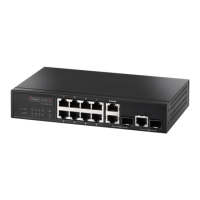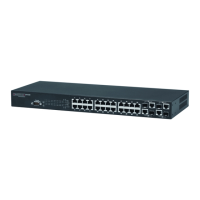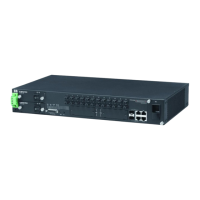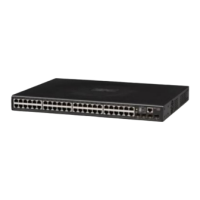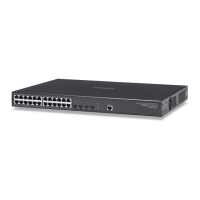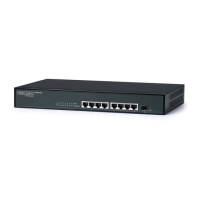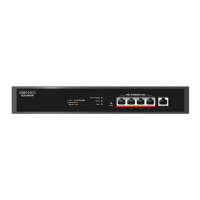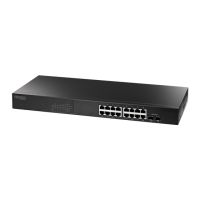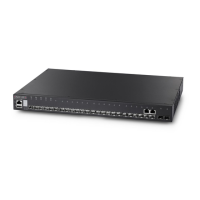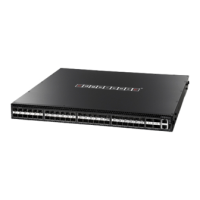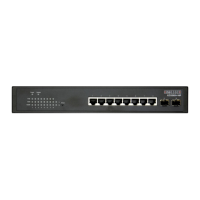C
HAPTER
1
| Introduction
Description of Software Features
– 58 –
frames when they enter the service provider’s network, and then stripping
the tags when the frames leave the network.
TRAFFIC
PRIORITIZATION
This switch prioritizes each packet based on the required level of service,
using four priority queues with strict priority, Weighted Round Robin
(WRR), or a combination of strict and weighted queuing. It uses IEEE
802.1p and 802.1Q tags to prioritize incoming traffic based on input from
the end-station application. These functions can
be used to provide
independent priorities for delay-sensitive data and best-effort data.
This switch also supports several common methods of prioritizing layer 3/4
traffic to meet application requirements. Traffic can be prioritized based on
the priority bits in the IP frame’s Type of Service (ToS) octet using DSCP, or
IP Precedence. When these services are enabled, the priorities are mapped
to a Class of Service value by the switch, and the traffic then sent to the
corresponding output queue.
QUALITY OF SERVICE Differentiated Services (DiffServ) provides policy-based management
mechanisms used for prioritizing network resources to meet the
requirements of specific traffic types on a per-hop basis. Each packet is
classified upon entry into the network based on access lists, IP Precedence
or DSCP values, or VLAN lists. Using access lists allows you select traffic
based on Layer 2, Layer 3, or Layer 4 information contained in each
packet. Based on network policies, different kinds of traffic can be marked
for different kinds of forwarding.
MULTICAST FILTERING Specific multicast traffic can be assigned to its own VLAN to ensure that it
does not interfere with normal network traffic and to guarantee real-time
delivery by setting the required priority level for the designated VLAN. The
switch uses IGMP Snooping and Query to manage multicast group
registration. It also supports Multicast VLAN Registration (MVR) which
allows common multicast traffic, such as television channels, to be
transmitted across a single network-wide multicast VLAN shared by hosts
residing in other standard or private VLAN groups, while preserving
security and data isolation for normal traffic.
LINK LAYER
DISCOVERY PROTOCOL
LLDP is used to discover basic information about neighboring devices
within the local broadcast domain. LLDP is a Layer 2 protocol that
advertises information about the sending device and collects information
gathered from neighboring network nodes it discovers.
Advertised information is represented in Type Length Value (TLV) format
according to the IEEE 802.1ab standard, and can include details such as
device identification, capabilities and configuration settings. Media
Endpoint Discovery (LLDP-MED) is an extension of LLDP intended for
managing endpoint devices such as Voice over IP phones and network
switches. The LLDP-MED TLVs advertise information such as network
policy, power, inventory, and device location details. The LLDP and LLDP-
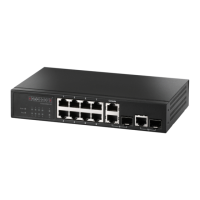
